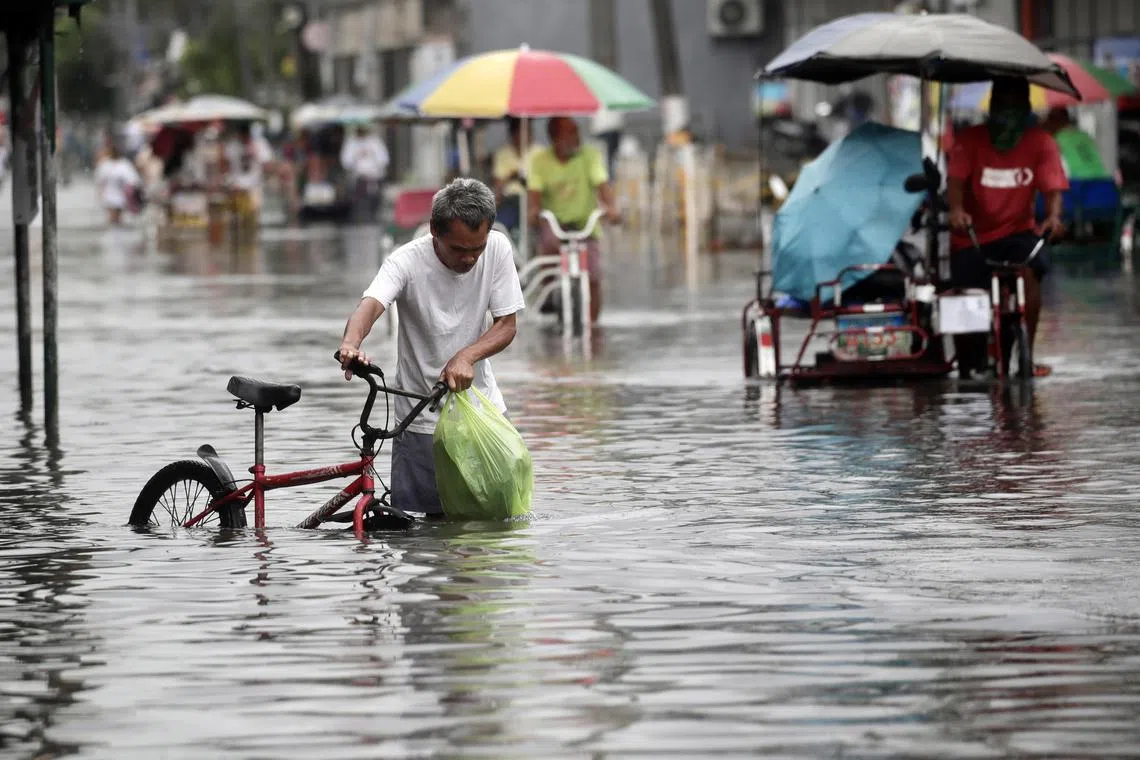Philippines forecasts heavy rain as tropical storm Khanun turns into typhoon
Sign up now: Get insights on Asia's fast-moving developments

A man wading through a flooded road in Valenzuela city, Metro Manila, on July 29.
PHOTO: EPA-EFE
Follow topic:
MANILA - The Philippine weather bureau warned of heavy rain, floods and landslides in mountainous areas of the country, with intensifying severe tropical storm Khanun forecast to develop into a typhoon.
Khanun is expected to “steadily intensify within the next three days”, the Philippine weather agency Pagasa said in its 5am advisory. “It is forecast to become a typhoon between late evening today or tomorrow early morning and reach its peak intensity on Tuesday.”
While Khanun is on a northward path over the Philippine Sea and appears to be heading away from land mass, heavy rainfall is expected as the storm and super typhoon Doksuri, which hit the country last week,
The water level of the capital region’s Marikina River reached 16.1m on Saturday evening, nearing the 18m level that will trigger a forced evacuation of certain parts of Marikina City, the Philippine Daily Inquirer reported, citing the local government.
The Philippines is affected by an average of 20 tropical cyclones a year, making it one of the world’s worst-hit countries, according to Pagasa.
Doksuri, which struck last week, destroyed more than 1.3 billion pesos (S$31.5 million) worth of agricultural crops and caused an estimated 2.66 billion pesos of damage to infrastructure, including bridges and roads, according to local media reports that cited the agriculture and public works departments.
The super typhoon affected half a million people, mostly in the northern parts of main Luzon island, and left 14 dead, according to the National Disaster Risk Reduction and Management Council. It flooded more than 258 villages in the Luzon provinces of Bulacan and Pampanga, located north of Manila.
Khanun is moving at 15km an hour, with maximum sustained winds of 95km an hour near the centre, and gusts of up to 115km an hour, Pagasa said. It is forecast to move north north-westward, before veering north-westward on Monday, according to the weather bureau.
The tropical storm may exit the Philippines on Monday evening or early Tuesday before turning west north-westward and passing close to Japan’s Okinawa islands in the Ryukyu archipelago on Tuesday morning, and then entering the East China Sea. BLOOMBERG

